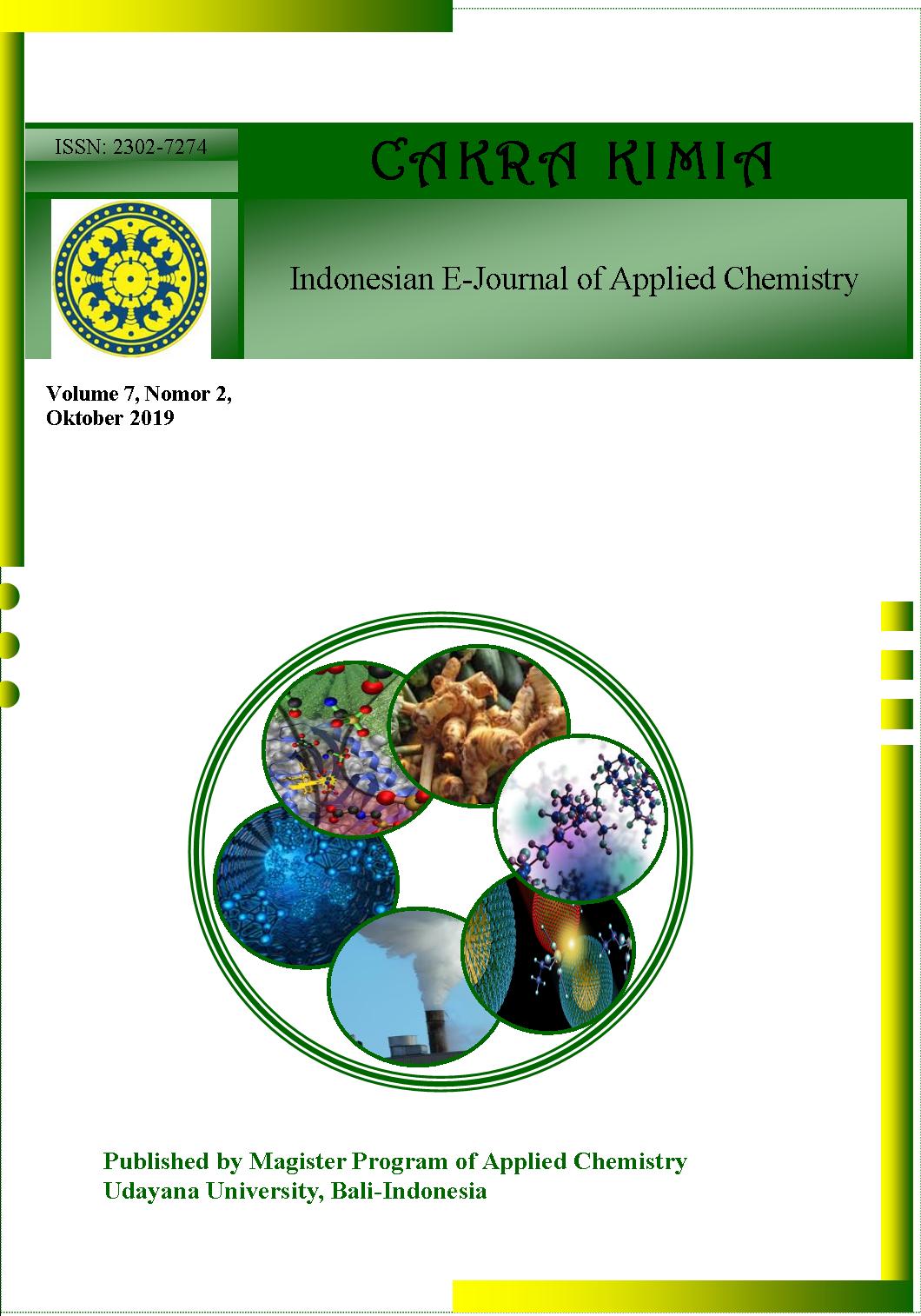PENGGUNAAN ENZIM PEPSIN UNTUK PRODUKSI HIDROLISAT PROTEIN KACANG GUDE (Cajanus cajan (L.) Millsp.) YANG AKTIF ANTIOKSIDAN
Abstract
ABSTRAK: Penelitian tentang penggunaan enzim pepsin untuk produksi hidrolisat protein kacang gude (Cajanus cajan (L.) Millsp.) yang aktif antioksidan telah dilakukan dengan variasi waktu hidrolisis 0, 30, 60, 90, dan 120 menit. Hidrolisis protein enzimatik merupakan metode yang sangat efisien untuk menghasilkan bioaktif peptida termasuk menunjukkan aktivitas antioksidan. Penelitian ini dilakukan untuk mengetahui konsentrasi asam amino bebas yang dilepaskan selama proses hidrolisis, nilai derajat hidrolisis, aktivitas antioksidan, dan pengaruh waktu hidrolisis terhadap aktivitas antioksidan. Konsentrasi asam amino diukur menggunakan standar asam amino leusin dengan menggunakan spektrofotometer pada ?maks 570 nm dan diperoleh konsentrasi tertinggi hidrolisat protein sebesar 2,4671 mg/mL. Enzim pepsin mampu menghidrolisis protein dengan nilai derajat hidrolisis tertinggi sebesar 23,59%. Aktivitas antioksidan diuji secara in vitro menggunakan radikal DPPH dan diukur pada ?maks 517 nm. Berdasarkan penelitian hidrolisat kacang gude mempunyai aktivitas antioksidan tertinggi sebesar 82,46%. Hasil penelitian menunjukkan adanya pengaruh variasi waktu hidrolisis terhadap terhadap peningkatan jumlah asam amino bebas, nilai derajat hidrolisis, dan aktivitas antioksidan. Diketahui bahwa semakin lama waktu hidrolisis, hasil yang diperoleh semakin meningkat. Hasil tertinggi pada masing-masing proses tersebut terjadi pada waktu 120 menit sehingga hasil dimungkinkan masih dapat meningkat dengan penambahan waktu hidrolisis.
Kata kunci: bioaktif peptida, kacang gude, pepsin, derajat hidrolisis, antioksidan
ABSTRACT: The study of the effect of pepsin enzyme for the production of pigeon pea (Cajanus cajan (L.) Millsp.) protein hydrolyzate which is active as antioxidants has been carried out with variations in hydrolysis time of 0, 30, 60, 90, and 120 minutes. Enzymatic protein hydrolysis is a very efficient method for producing bioactive peptides and also showing antioxidant activity. This study was conducted to determine the concentration of free amino acids released during the hydrolysis process, the value of hydrolysis degrees, antioxidant activity, and the influence of hydrolysis time on antioxidant activity. Amino acid concentrations were measured using standard amino acid leucine using a spectrophotometer at ?max 570 nm and obtained the highest concentration of protein hydrolyzate at 2,4671 mg / mL. The pepsin enzyme is able to hydrolyze proteins with the highest hydrolysis degree value of 23.59%. Antioxidant activity was tested in vitro using DPPH radical and measured at ?maks 517 nm. Based on the research of pigeon pea hydrolyzate it has the highest antioxidant activity of 82.46%. The results showed the influence of the variation of hydrolysis time on the increase in the number of free amino acids, the value of hydrolysis degrees, and antioxidant activity. It is known that the longer the hydrolysis time, the results obtained increase. The highest results in each of these processes occur at 120 minutes so that the results are possible can still increase with the addition of hydrolysis time.
Downloads
References
[2] Syarifuddin, M.U. Kapasitas Antioksidan dan Stabilitas Ekstrak Pigmen Antosianin Kulit Kacang Gude Hitam (Cajanus cajan [Linn.] Millsp.) dengan Variasi Pelarut. Skripsi, Fakultas Pertanian Universitas Sebelas Maret, 2011.
[3] Maria C. Linder. Nutritional Biochemistry and Metabolism. California State University, 1992.
[4] Mathew C.K. and Van Holde K.E. Biochemistry, 2nd edition: 143, California. The Benjamin Cumming Publishing Company, Inc., 1996.
[5] Bamdad F. Dokhani S.H. Keramat J. and Zaerie R. The Impact of Germination and in vitro Digestion on the Formation of Angiostensin Converting Enzyme (ACE) Inhibitory Peptides from Lentil Proteins Compared to Whey Protein. Int. J. of Biol. Biomol. Agric. Food and Biotech. Eng. 2009, 3(1), 109-119.
[6] AOAC. Official Methods of Analysis of The Association of Official Analytical Chemist, AOAC. Washington DC, 1995.



 Petunjuk Penulisan
Petunjuk Penulisan
